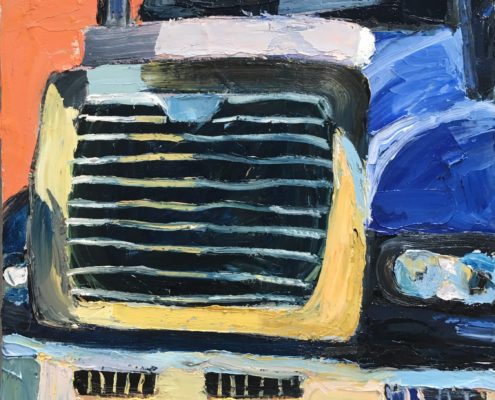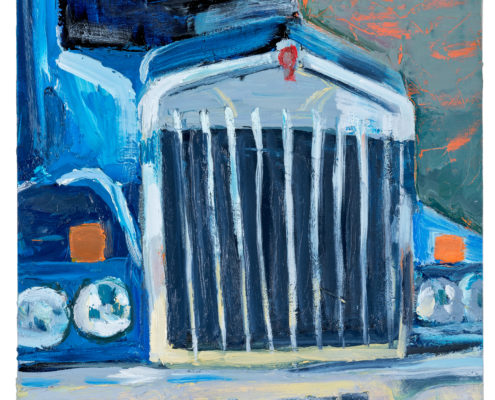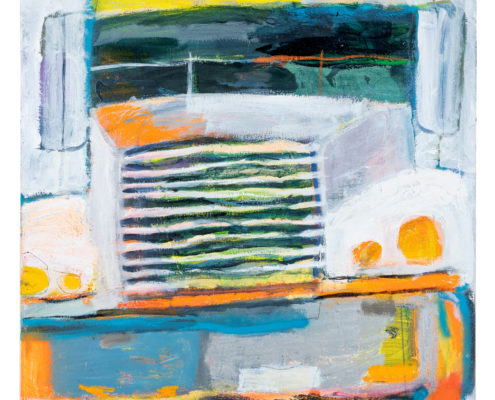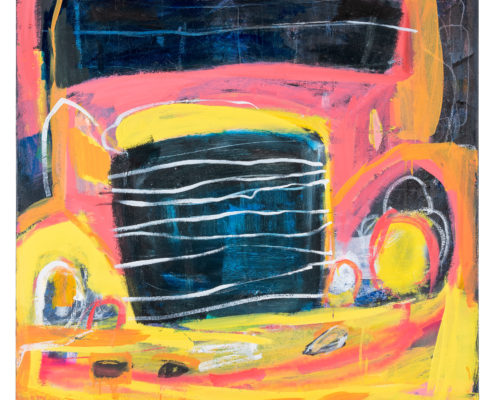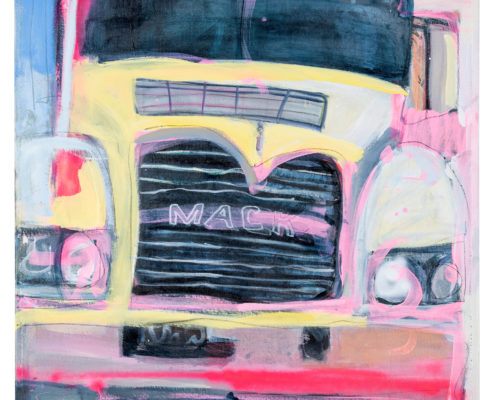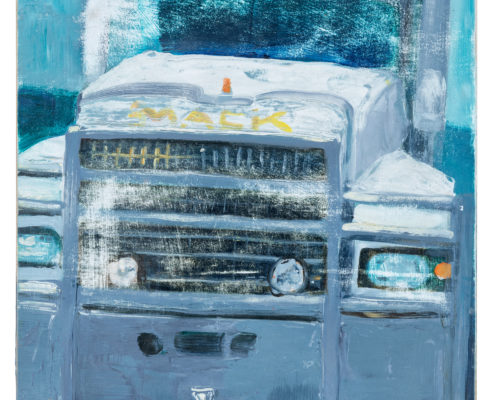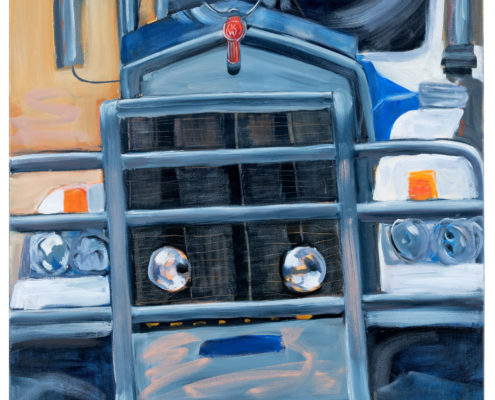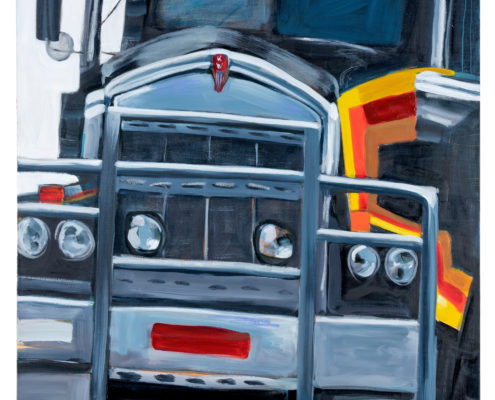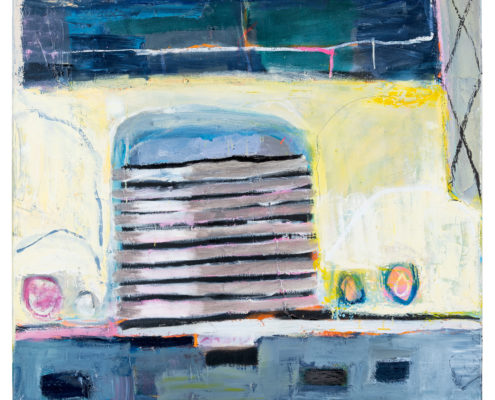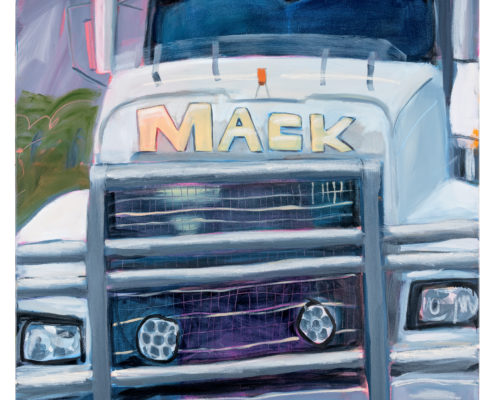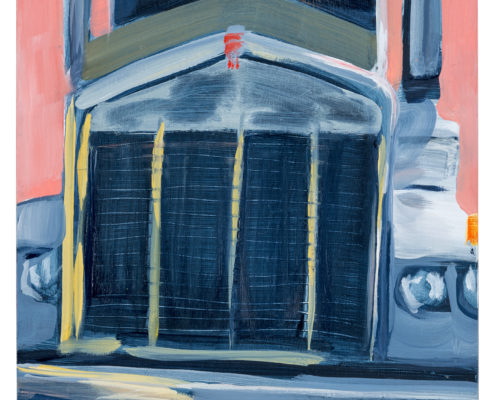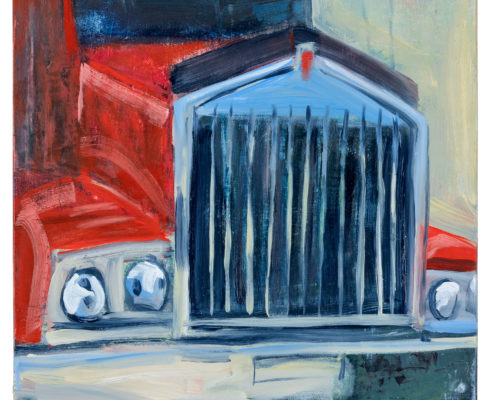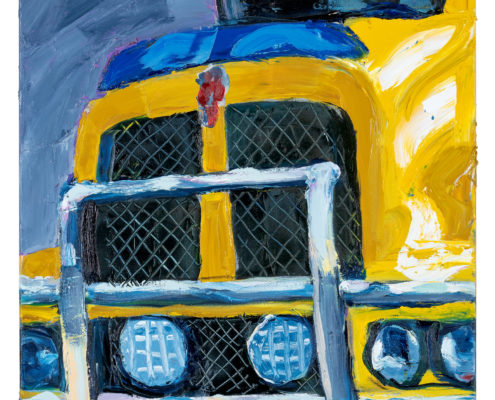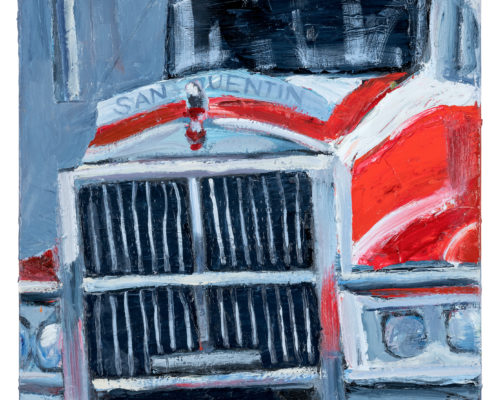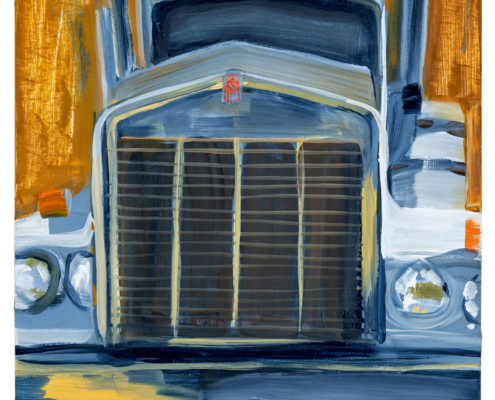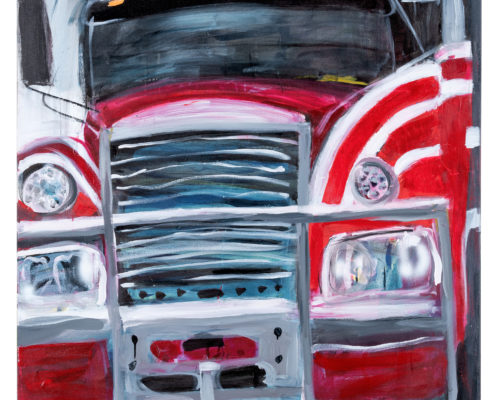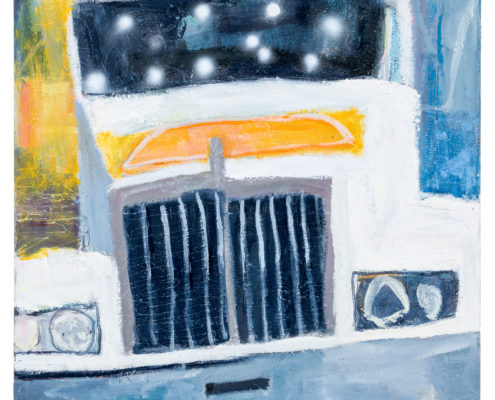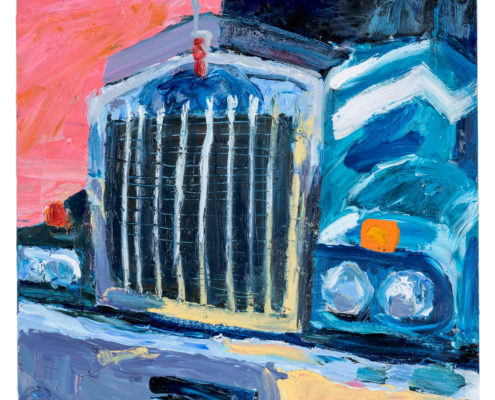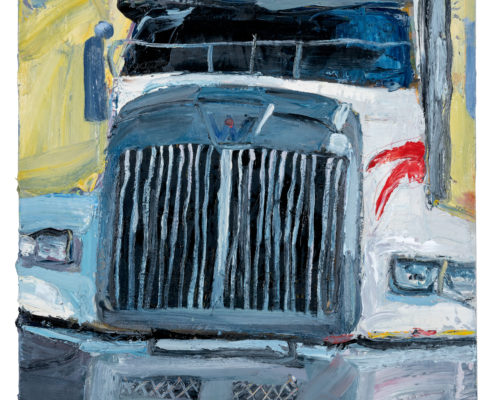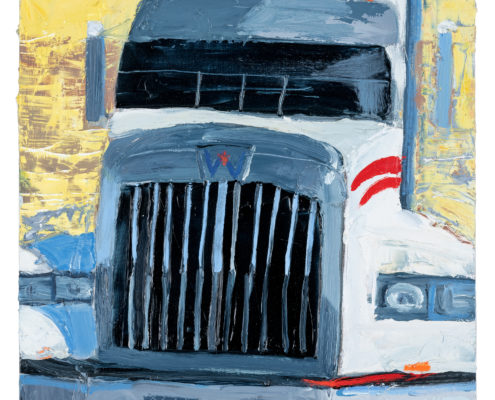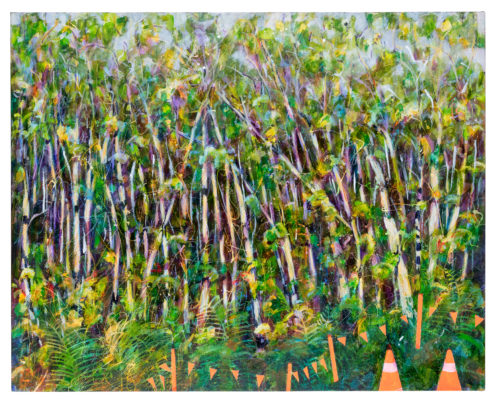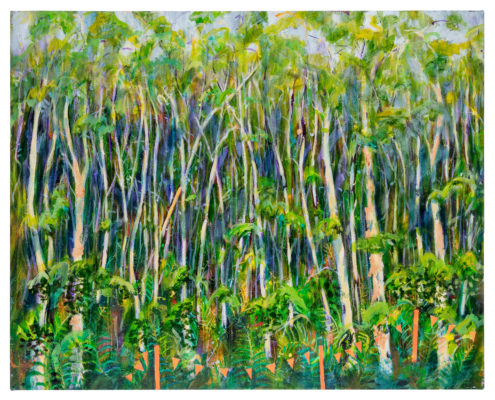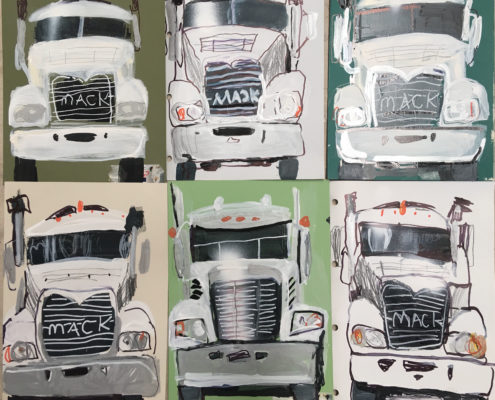Trucks
There is a deceptive simplicity in Helena Jackson-Lloyd’s approach to painting. Her energetic sweeps of colour and direct application of media bring a spontaneity to her subjects that makes the difficult seem effortless. Her work has that indescribable something – a particularity that sets it apart from other observational artists. Whether working in bright colour or muted tones, she imbues her compositions with a light-filled atmosphere that transforms everyday scenery into something exceptional.
Jackson-Lloyd is stirred by what’s around her, whether it be the movement, energy and essence of the natural world, or subjects as commonplace as a yard of prime movers. Landscape is a constant theme, with each artwork an attempt to better connect with the places she visits. Painting the scenery that surrounds her is Jackson-Lloyd’s way of trying to understand it, to learn its quirks and see past what’s on the surface.
The Truck Show: an alternate landscape takes this aspect of Jackson- Lloyd’s practice to its most literal point. There’s no beauty in trucks…why paint them?
She wanted to know more.
When we think of landscape painting, we logically think of coastal scenes or vast rural vistas. Jackson-Lloyd’s oeuvre to now has been filled with works that champion the natural environment and acknowledge its fragility. But she is increasingly disturbed by the environmental impact of human existence. For a growing segment of society, their immediate environ is the city – the buildings, motorways and vehicles that pass along them. The Sunshine Coast, like so many areas of Australia, has seen its landscape forever changed by development. Heavy vehicles are the landscape.
Who was it that said the more you look at something familiar, the stranger it seems?
On paper it sounds bleak – a view of a truck yard, as seen from a studio window. But Jackson–Lloyd’s trucks compel a strange sense of enthusiasm, conveying the energy of a moment and her emotional response to it. The process of painting trucks did not come easy. How to capture their power without resorting to photorealism? Lloyd wasn’t interested in creating caricatures. Determined to resolve this body of work, she channelled an engine’s force and pushed through. The result is blatant, intense and strong. Cabs bear down on the viewer, constrained only by the picture edge. Windscreens are blacked out, the backgrounds obscured by block colour. There is an explicit removal of the people that exist alongside the trucks. We have no clues as to the humans that drive them or what they haul, only that their rigs exist in Jackson-Lloyd’s day-to-day.
Yet with the trucks recast in joyful colours, their hard lines abstracted, there is an undeniable playfulness about the works. Some models are more favoured than others. Lloyd confesses to becoming a little truck-obsessed. The warm palettes and softened angles reveal her growing affection as she observed the depot’s rhythm, and the care with which the drivers maintained their vehicles. Truckies really love their rigs.
Late in the day the yard falls silent and Jackson-Lloyd is left to consider its presence. Gleaming in the evening light, the parked rigs take on a sculptural formality. Each truck is as much about where it’s been as where it’s going. Maybe that’s where the fascination lies. For an artist so imbedded in the landscaping tradition, there is perhaps no greater contemplation of place than to observe an industry for whom ‘place’ is so often an abstract.
Carrie McCarthy

